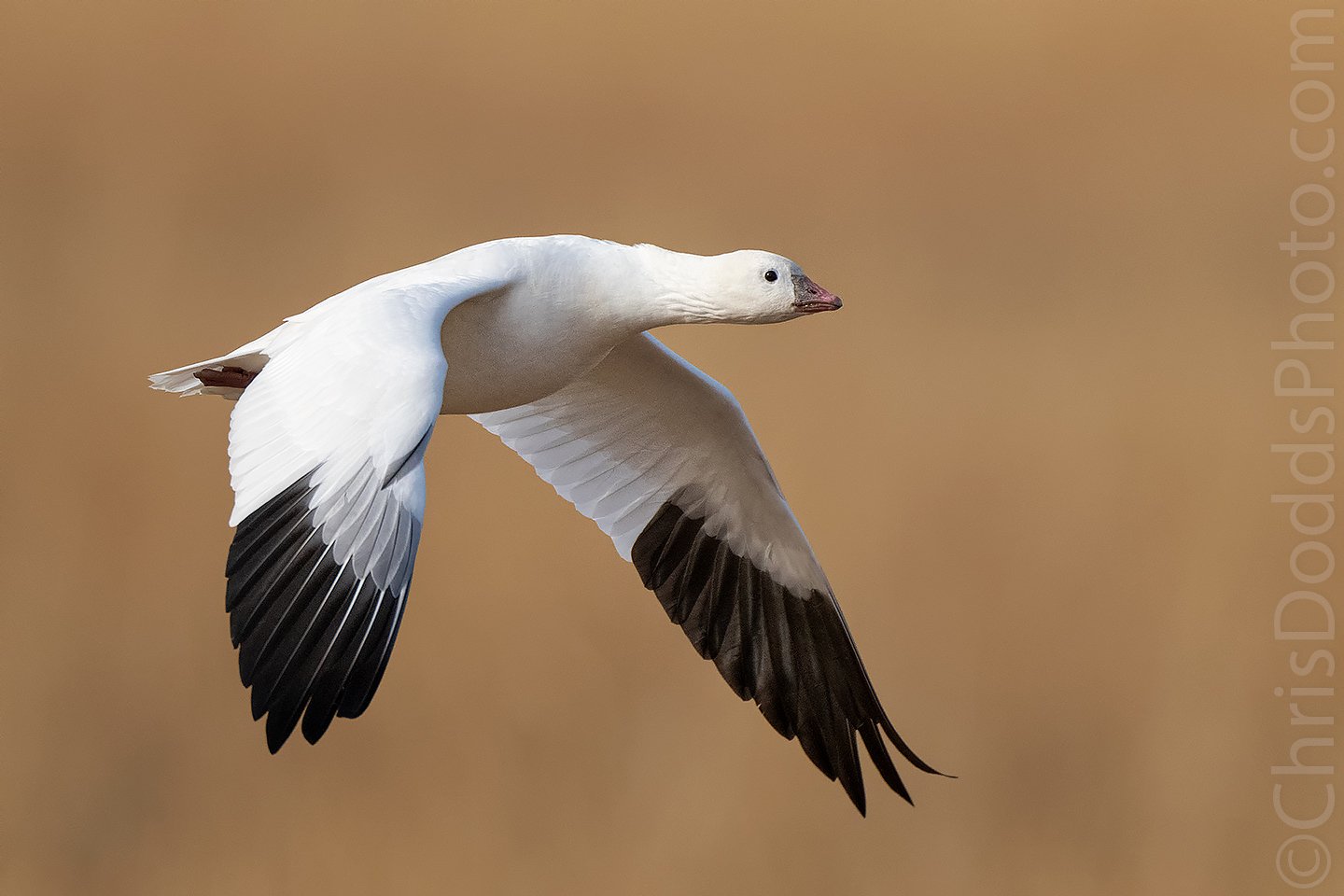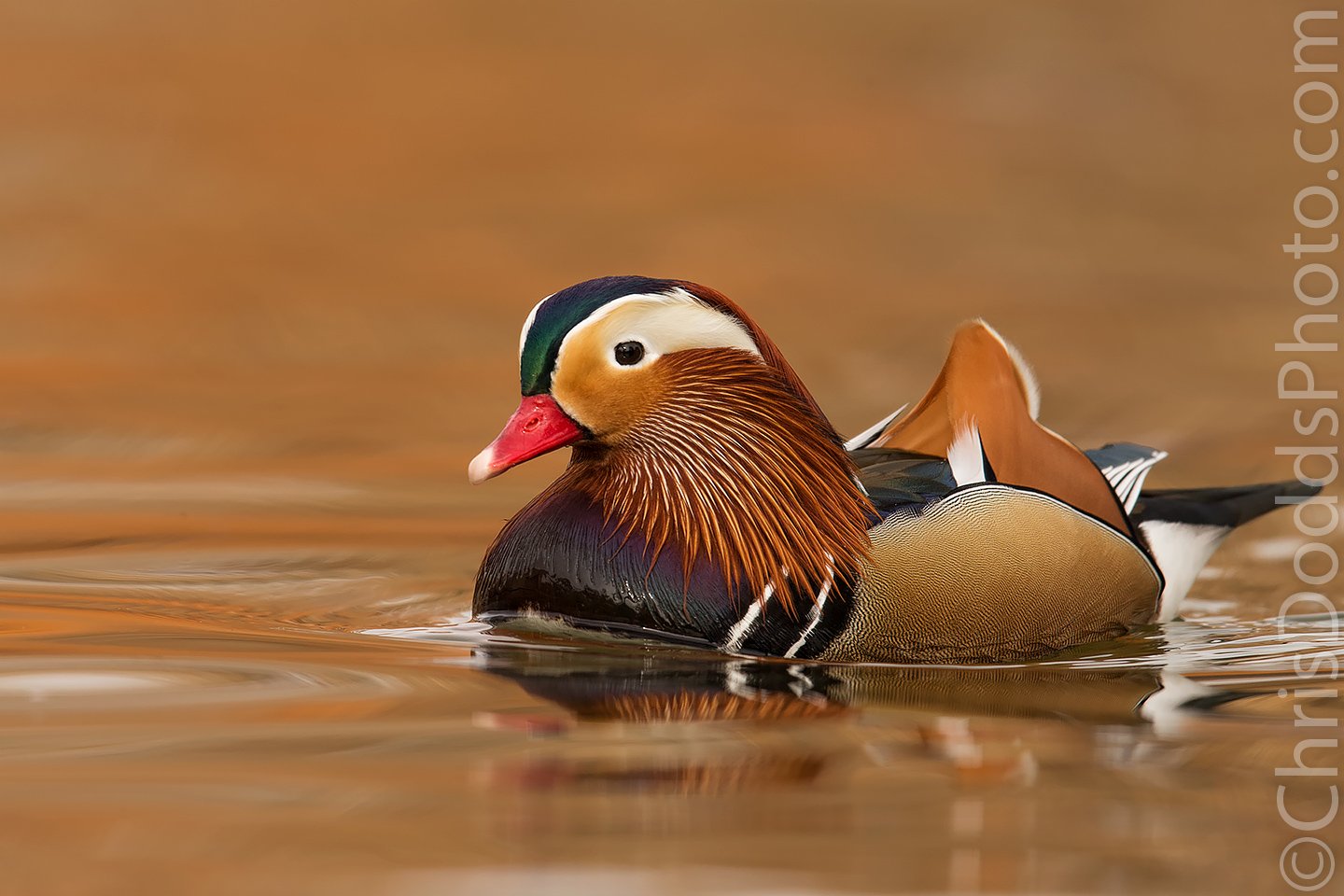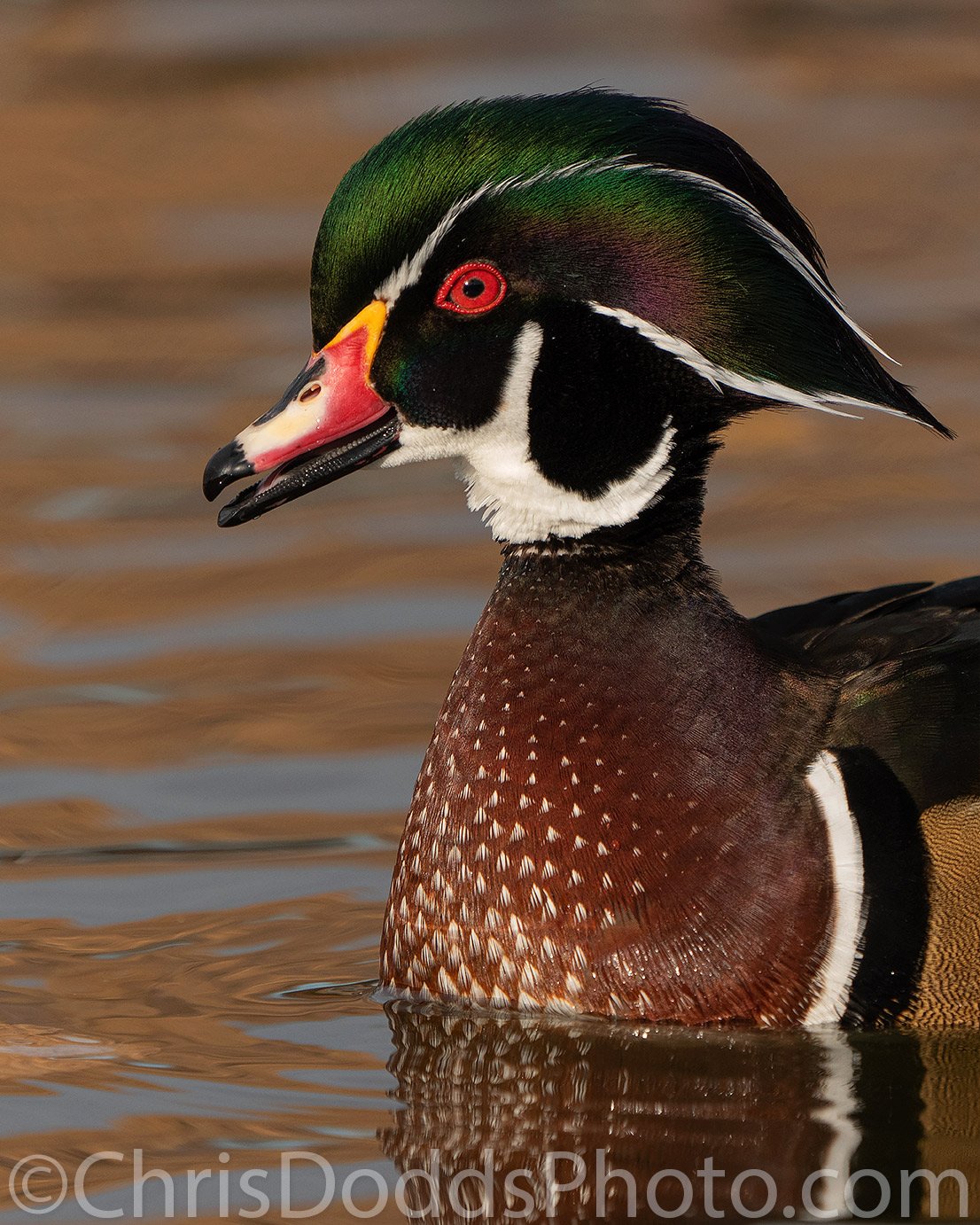After a cold and productive morning shoot, we decided to stay out and use the harsh light to practice tracking birds in flight. I always take advantage of any opportunity to hone my reflexes, but rarely push the trigger in harsh light: the difference on this day was the wind was directly from behind us when we pointed out shadows at the birds. So, far from a masterpiece, but I do love this head-on landing shot with the Snow Goose calling and the out-of-focus cottonwood trees in the background.
Snow Goose Landing Head-on (Chen Caerulescens, Oie des Neiges, SNGO) from my Better than Bosque workshop. Bosque del Apache National Wildlife Refuge, San Antonio, New Mexico, USA. Image Copyright ©Christopher Dodds. Sony Alpha alpha 1 Mirrorless camera & Sony FE 600mm f/4 G Master OSS Lens with Sony FE 2X Teleconverter @1,200mm ISO 1,000, f/8 @ 1/5,000s Manual exposure. Full Frame image.



















